This month’s lesson will take a close look at Danny Gatton''s boogie-woogie piano grooves on guitar.
| Print it! Click here to download a high-resolution, printable PDF of the notation. |
| Chops: Advanced beginner to early intermediate
Theory: Beginner Lesson Overview: • Learn the basics of boogie-woogie guitar styles. • Play Danny Gatton-inspired riffs with hybrid picking. • Develop independence between fingers on your picking hand. |
This month’s lesson will take a close look at Danny Gatton's boogie-woogie piano grooves on guitar. Boogie-woogie is a style of blues usually played at fast tempos. Its main characteristic is the repetitive bass line. This is usually combined with stabs or soloing in the right hand.
First, let's play the bass figure in the key of A in the open position shown in Fig. 1. Use the pick strokes written in the example and make sure to be consistent with them. It will make it easier when we combined this with the stabs in the next example.
Download Example 1 Audio...
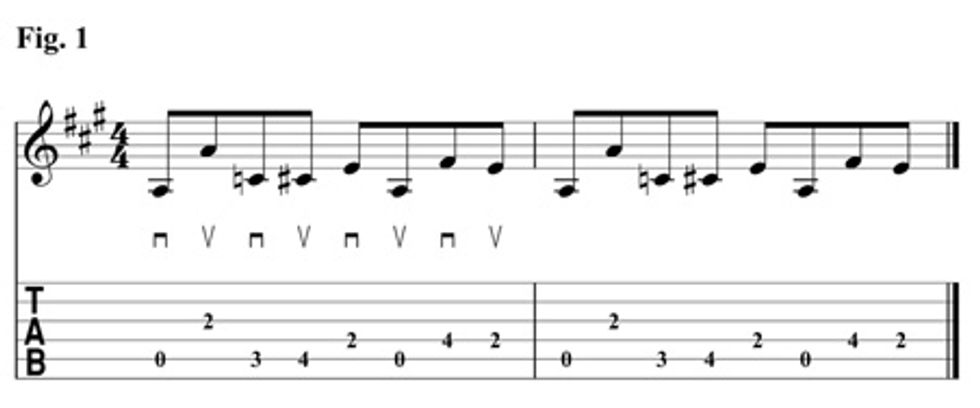
In Fig. 2 we'll add in the chord stabs. I'm using my pinky to barre across the first and second strings at the fifth fret. With your picking hand grab these strings with your middle and ring finger and pluck. It's important not to let these ring. Once you have plucked them release the tension in the pinky so the ringing stops. Go slow and calculate each movement. There's a lot to think about in this one.
Download Example 2 Audio...
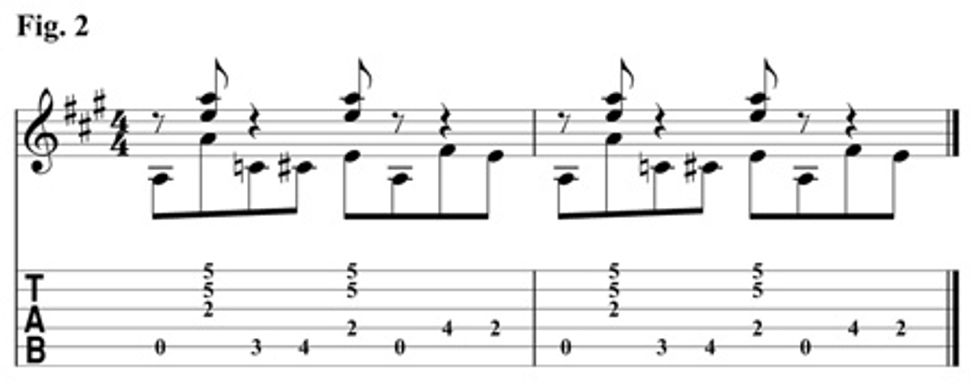
Fig. 3 is a movable version in the key of D major. I'm going to start by barring my index finger across the fifth fret starting on the fifth string. Then I'm placing my middle finger on the seventh fret fourth string. This frees up my ring and pinky fingers to play the bass line.
Download Example 3 Audio...
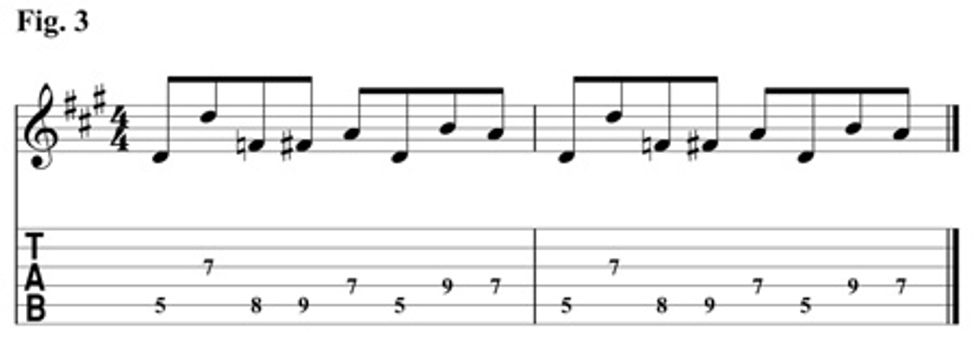
Next, we will add the chord stabs. In Fig. 4 we have the boogie pattern along with the chords on the upper strings. Your barre finger will now have to release tension after the stabs to make sure they don't continue to ring.
Download Example 4 Audio...
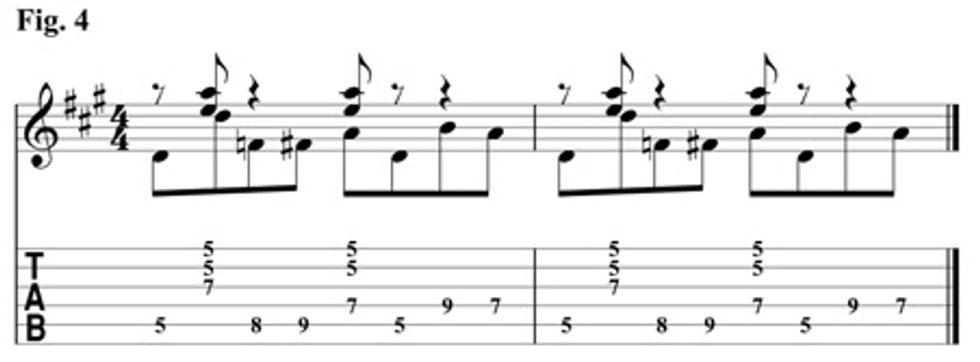
Finally, we have Fig. 5, which combines all the examples together to create a cool rhythm part over a blues in the key of A. Although I might sound like a broken record, start each example at a slow tempo in order to internalize the pattern. Once you feel comfortable, increase the tempo and move the pattern around to different keys.
Download Example 5 Audio...
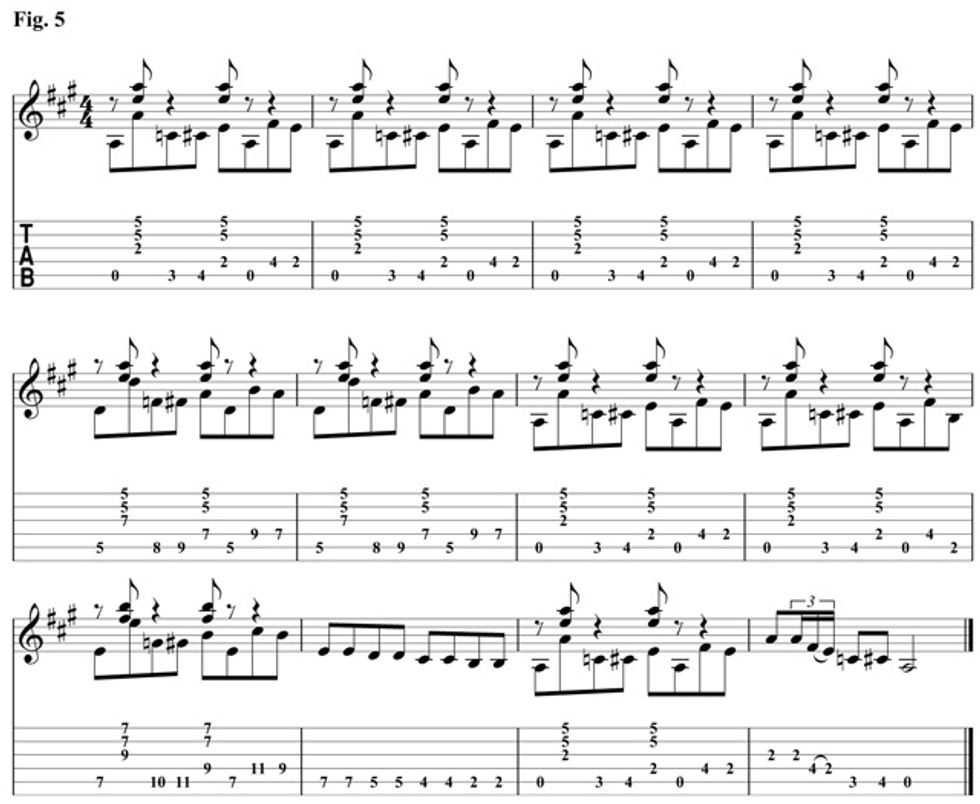
 Jason Loughlin has performed with Amos Lee, Rachael Yamagata, James Burton, Mike Viola, Nellie Mckay, Phil Roy, Marshall Crenshaw, Sara Bareillies, Lesley Gore, Ben Arnold and John Francis to name a few. Jason lives in Williamsburg, Brooklyn performing and teaching. Look out for his new record, Peach Crate, due out in February. For other info be sure to check his website jasonloughlin.com
Jason Loughlin has performed with Amos Lee, Rachael Yamagata, James Burton, Mike Viola, Nellie Mckay, Phil Roy, Marshall Crenshaw, Sara Bareillies, Lesley Gore, Ben Arnold and John Francis to name a few. Jason lives in Williamsburg, Brooklyn performing and teaching. Look out for his new record, Peach Crate, due out in February. For other info be sure to check his website jasonloughlin.com
